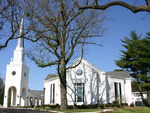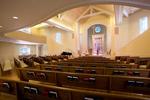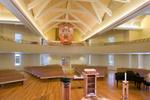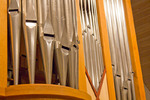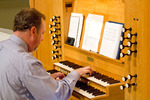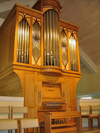Making Music City Mixture : Part IV
 Sunday, August 12, 2012 at 11:58AM
Sunday, August 12, 2012 at 11:58AM Part 4 of a multi-part narrative of my new recording on mechanical action organs of Nashville. Music City Mixture is available here.
Second Presbyterian Church
Church: http://www.SecondPresbyterian.net/
Organ specifications: http://www.nashvilleago.org/AreaOrgans/Specs/SecondPres.htm
Organ builder: http://www.Juget-Sinclair.com
Sunday afternoon, after finishing practicing at First Presbyterian, it was off to uncharted waters at Second Presbyterian. The church is in a newish building that imparts a bit of a beach house look inside, with bamboo flooring, pastel walls, and indirect lighting. It all has a “cooling” effect on the observer. Here are some photos from the church website:
The Juget-Sinclair is buried treasure. Its large two-manual specification is an unending source of inspiration, and piece after piece kept presenting itself for successful inclusion. The organ played everything beautifully. With the near-instantaneous addition of this fine organ to the project, many plans had to be made – and fast. What to choose? What to move from another organ to this one? The recording bears out the final decisions. Here are some photos from practice sessions:
Although we spoke on the phone, I didn’t get to meet Director of Music David Bridges, but church Administrator Sarah White was most helpful and gracious. This church wins the prize for last-minute hospitality, and Music City Mixture is better for it.
We recorded at Second Presbyterian on Tuesday, late in the day. Although I’m confessing now to being tired by then that day, I hope the Bach E Major Toccata doesn’t give it away too much! The action of the Juget-Sinclair is comfortable, if a bit feather light. The suspended action is sensitive, and for a fellow who plays on an electro-pneumatic organ most of the time, it was all too easy to graze wrong notes. Which I did. In abundance. We worked a good bit to clean up some spots in the Bach E Major. We also worked on the Bach Gigue Fugue, for which the pedal always seemed to be behind, even though the pedal action is firm and shallow. Might have been the pedal reed, some delay on whose speech you might be able to hear in the Bach E Major. The CD did not have room for the Gigue Fugue, but it is here:
The first two of the Gawthrop Floral Preludes recorded relatively quickly. But we reached an impasse on the third one. The quick-moving chords of that movement present many opportunities for fingers to hit cracks and graze wrong notes. Which I did. In abundance. It reached the point where I called Dan Gawthrop and apologized for the possibility of having only two of the pieces represented. But the next day during First Presbyterian’s recording sessions, the idea came to record the third one there, on a more resistant action. Worked beautifully. Problem solved. Called Dan back with the good news.
 Joby Bell | tagged
Joby Bell | tagged  Music City Mixture
Music City Mixture 
